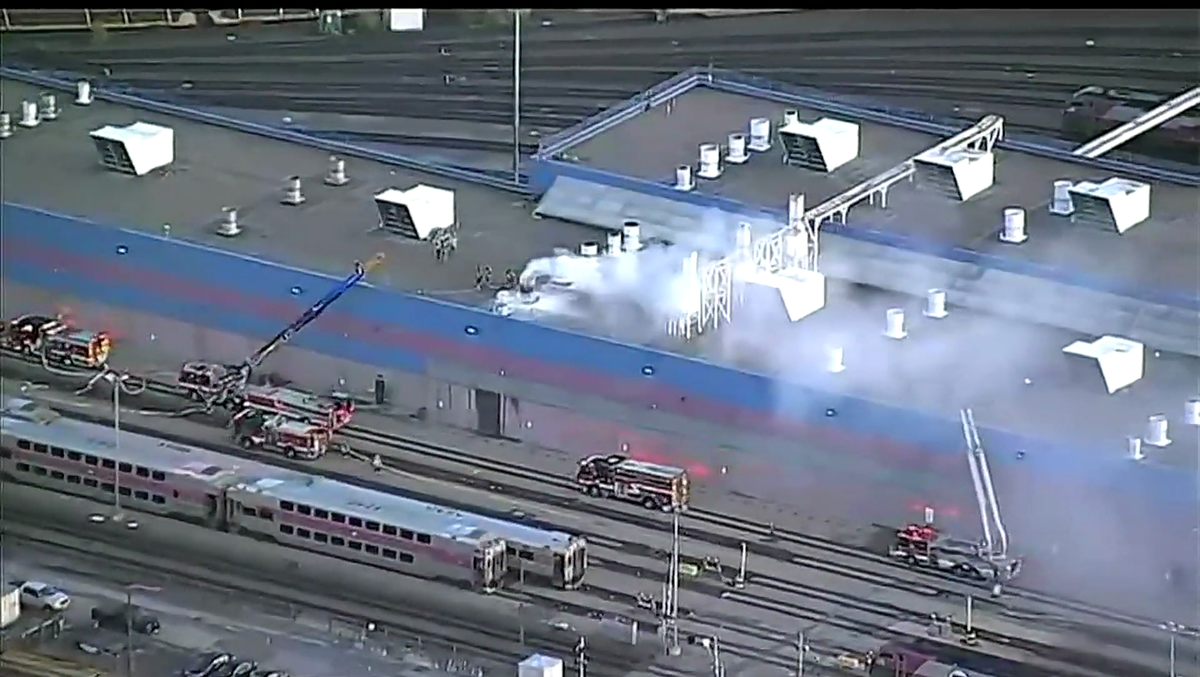No, it's one of the worst posts Alon has ever written. This line in particular is liar-liar pants-on-fire bad:
The line is already wired thanks to Amtrak’s investment in the 1990s, and all that is required is wiring a few siding and yard tracks that Amtrak did not electrify as it does not itself use them
There is a whole shitload more to do than just that, and he bloody well knows it because it's been discussed ad nauseam in the comment section of his own blog many times before.
There is not enough electrical capacity to run electric commuter trains alongside Amtrak. The Providence Line would short out the whole system if it attempted to run its whole schedule under wire right this second. As solo investor in the system back when it was built in 1999, Amtrak only built enough substation capacity to track with its own 25-year growth. Commuter needs, which went unspecified at the time because the T had no plans to electrify, would have to be handled by expanding the existing substations. Something ConnDOT just finished doing to Branford and New London subs for enabling M8 EMU's to start operating on Shore Line East. And something the MBTA must do at
Sharon substation, which you can see from Google was built with more than 2x as much empty space as it has installed equipment strictly for the purpose of when-needed commuter expansion.
In no way, shape, or form is re-outfitting a substation a pick-up-and-go task. It's large up-front expense, significant planning, significant equipment construction, and significant involvement with the utilities as Eversource has to run all kinds of simulations and risk assessments for peak load on its high-tension lines 2000 ft. south of Sharon sub. It is probably a 3-5 year process between funding/go-ahead and actually turning on the extra capacity. And it would have to be coordinated with RIDOT being able to fund a similar but somewhat lesser expansion of Warwick sub, which handles everything from the power break in Norton, MA to Richmond, RI...encompassing the southern 14 miles of the main Providence schedule through Attleboro, South Attleboro, Pawtucket, and Providence stations, plus all the extended-run mileage to Wickford and Kingston. You better hope for a non-gridlocked fed grant award season if you hope to be able to keep RI lockstep with MA on funding those expansions. And you have to have all these arrangements sewn up before you go shopping for the first EMU to go under those wires.
Again: Levy knows this.
The electric loco lease wasn't going to work anyway except as a technological evaluation, because it was impossible to put enough of them in-service at one time. They also would've had to be maintained at extremely busy Amtrak Southampton Shops, where Northeast Regional and Acela equipment gets serviced. The T knows all about how congested Southampton is, because they've been butting heads with Amtrak for years of Purple Line sets taking up yard space meant for Regionals. Putting lease engines on top of the shop's duties would've required them to hire more staff...so of course the rental price was high: the parts-and-
labor needed to go heavy on the labor part. This is in no way a conspiracy. It merely reflects that this deal would've been tough going logistically all-around...from the electrical capacity to the maintenance capacity.
Levy knows this; it's been discussed before on his site.
Level boarding: yes, it sucks that the Providence Line doesn't have it. But Amtrak controls the tracks while the T controls the stations, and Amtrak has sketched out that each of those stations needs passing-track capacity. So of course the T is not going to raise platforms in-place when Amtrak could come up to them a week later and say "I've got match funding to quad-track Sharon and Mansfield with platform turnouts; you ready for the jackhammer?" They need to act in lockstep to do anything, and right now Amtrak keeps saying MA isn't a priority. The T can't even raise the platforms at existing quad-track Attleboro because Amtrak isn't willing to install new crossovers to let CSX back up onto the Middleboro Secondary from the center tracks when it's got a wide-load freight that won't clear a full-high.
Now, building something twice for the sake of instant gratification might be fine and dandy for some high-and-mighty faraway transpo blogger, but I think most MA taxpayers would have a significant bone to pick with that. And once more: Levy knows this arrangement; he's spewed spittle all over the comments section before about what a trav-sham-ockery it is that the T has to hold hands at all with Amtrak on stuff like this. Boo-hoo, can't we just ignore legalities.
Also...when pressed for attribution on where he heard this:
1. No, I’ve heard this privately from area activists who are in constant touch with MBTA and adjacent officials.
Well, that's certainly reliable sourcing! He wouldn't even stoop to calling this a TransitMatters scoop, because they actually vet their statements before releasing them. So this heresay is possibly no more trustworthy than a game of telephone spanning between Joe Pesaturo's lackeys and somebody's Twitter feed.:roll:
I'd comment on my own over there, but I'm in no mood tonight for that adirondacker12800 troll to render it unreadable by flooding the zone with non-sequiturs until it completely breaks the threading until you can't tell who's replying to whom (already happening). And since the name of the game on this piece was disingenuity it would only be stuff that's been said to him many times before with no pushback.



